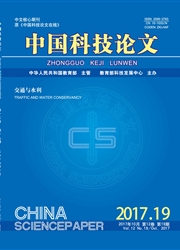

 中文摘要:
中文摘要:
水稻矮缩病毒(rice dwarf virus,RDV)主要由黑尾叶蝉以持久增殖型方式传播。RDV编码的3个非结构蛋白Pns6、Pns11和Pns12是病毒在介体细胞内侵染过程中形成提供病毒复制和子代病毒粒体装配的唯一场所——病毒原质(viroplasm)的主要成分。利用黑尾叶蝉培养细胞和RNA干扰(RNA interference,RNAi)体系,研究Pns6在病毒侵染介体昆虫过程中的功能。结果显示,将体外合成靶向Pns6基因的dsRNA转染黑尾叶蝉培养细胞后,Pns6合成显著降低,viroplasm的形成和病毒的侵染也受到抑制。用显微注射技术导入到黑尾叶蝉的靶向Pns6基因的dsRNA,同样抑制viroplasm的形成和病毒的侵染,最终阻碍病毒在介体体内的有效扩散。这些研究明确了Pns6在病毒侵染黑尾叶蝉过程中的功能,Pns6是RDV的复制关键因子。
 英文摘要:
英文摘要:
Rice dwarf virus(RDV)is mainly transmitted by leafhopper Nephotettix cincticeps in a persistent-propagative manner.Three non-structure proteins Pns6,Pns11 and Pns12 of RDV compose the matrix of virus factory,termed as viroplasm,for viral replication and assembly of progeny virions,when RDV infects cultural cells of insect vector.In this study,the system of cultural cells derived from N.cincticeps and technique of RNA interference(RNAi)were used to study the role of Pns6 playing in viral infection and replication in insect vector.The results show that dsRNAs from Pns6 gene synthesized in vitro and transfected cultural cells of N.cincticeps reduce the expression of Pns6.The development of viroplasm and infection of virus are also significantly inhibited.After dsRNAs from Pns6 are introduced into N.cincticeps by microinjection,the formation of viroplasm and infection of virus are blocked,finally the viral effective spread in leafhopper is inhibited.These results confirm that Pns6 is the key factor of viral replication during RDV infection.
 同期刊论文项目
同期刊论文项目
 同项目期刊论文
同项目期刊论文
 Nonstructural protein Pns4 of rice dwarf virus is essential for viral infection in its insect vector
Nonstructural protein Pns4 of rice dwarf virus is essential for viral infection in its insect vector Infection route of rice grassy stunt virus, a tenuivirus, in the body of its brown planthopper vecto
Infection route of rice grassy stunt virus, a tenuivirus, in the body of its brown planthopper vecto 期刊信息
期刊信息
